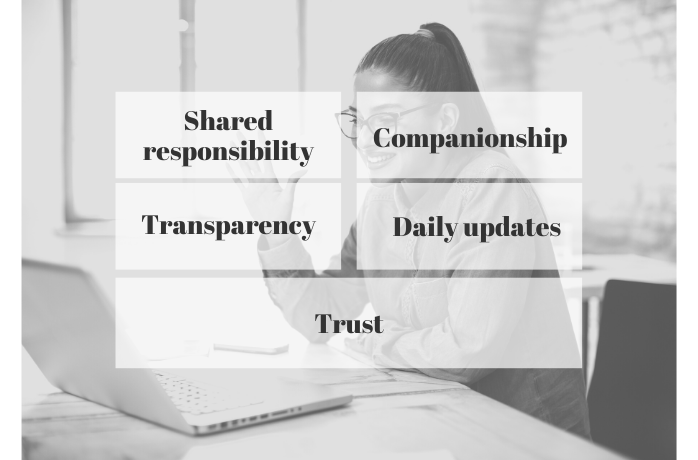
What Is Teams as a Service (TaaS)?
An introduction to the success and challenges of Agile Transformative Teams as a Service
Social distancing measures resulting from COVID have forced many into a prolonged state of telecommuting. Fortunately for Opentrends and many other tech companies, remote working is not a challenge as we have been doing it for a long time. While our Agile Transformative Teams as a Service (or Agile TaaS) offering can be done physically in our client’s office, it was designed to be done remotely.
Agile Transformative Teams aaS is a service product and an organizational model. It’s a product because it’s plug-and-play - we have a quantification and pricing system that only requires knowing the project's scope before it produces an estimate and a timeline. Although we launched this service two years before COVID as an add-on system, it has grown into an organizational model due to the new working structures that have evolved from the pandemic. Agile TaaS does not require a consulting phase, unlike most custom software or architecture development projects. Agile TaaS is a modular, adaptable team with a high degree of flexibility, only requiring an established backlog.
The main organizational difference between Agile Transformative TaaS and all other organizational models lies in its core values:
- Shared responsibility: The team participates in decision-making. Each member is empowered to share new ideas, identify risks, and accept or delegate tasks. All team members are aware of project goals in real time and task distribution. This stewards teamwork.
- Companionship: Collaboration between team members, including our client, is vital for a successful project. Companionship promotes this collaborative environment. It works best with teams under ten members, so multiple teams can be assembled to work on the same project and maintain the ideal team size.
- Transparency: Given that an Agile TaaS team works remotely, visibility into their work is paramount. Transparency is accomplished by publishing completed work in an online tool that can be accessed by all members of the team as well as our client.
- Daily updates: They’re a fundamental piece of the puzzle. The daily discipline of updating provides for early detection of anomalies and mitigation. Each day, project risks are evaluated while challenges and dependencies are discussed. This also predisposes the team to focus on small milestones that contribute to the project's overall completion as opposed to longer goals that may cause lag.
- Trust: In the Agile TaaS model, our client becomes an additional team member. The client is kept informed of everything and has access to every detail. Every part of the project is in the cloud and can be viewed at any time, anywhere.

It’s important to know the elements that work against Agile Transformative TaaS. Fallacies that may appear as valuable elements but end up slowing things down:
- Tool-centric: We have witnessed too many instances of over-relying on the tools used to plan, organize, and manage a project, where the tool itself is the main focus and a barometer for success. This is a lot more common than we’d like to see. The tool should never be as important as how it’s used because a good Agile TaaS will work well with any tool.
- Methodology obsession: The line that separates stringency from fanaticism in project management methodologies is astonishingly fuzzy. Iterative methodologies tend to work better in TaaS. Waterfall methodologies almost always require a much larger effort to mitigate their increased risk, resulting in a lower on-time goal completion rate. Methodologies can’t account for every possibility and a capacity to improvise is required to overcome the unexpected bumps on the road. Our TaaS is committed to iterative Agile principles instead of being tied to a particular methodology.
- Centralizing authority: Traditional project managers fear decentralized teams. The need to control every detail can lead to negative consequences and must be avoided. Each member of the Agile TaaS assumes a specific set of clearly defined responsibilities, including our client, who must be able to identify the small milestones that will complete the project.

In conclusion, our TaaS was directly inspired by the Agile Manifesto (the principles, not its methodologies) and, above all, seeks cooperation, sustainable progress, and continuous improvement.
With the many Agile TaaS projects we’ve completed, we have achieved a consistent on-time delivery completion rate of 98%. This rate, compared to the typical industry average of 85% (based on waterfall methodologies), solidifies the success of our TaaS offering.
We invite you to meet our Agile Transformative TaaS leaders and learn how we can speed up custom software or architecture development for big and medium-sized companies.
Article by G. García


